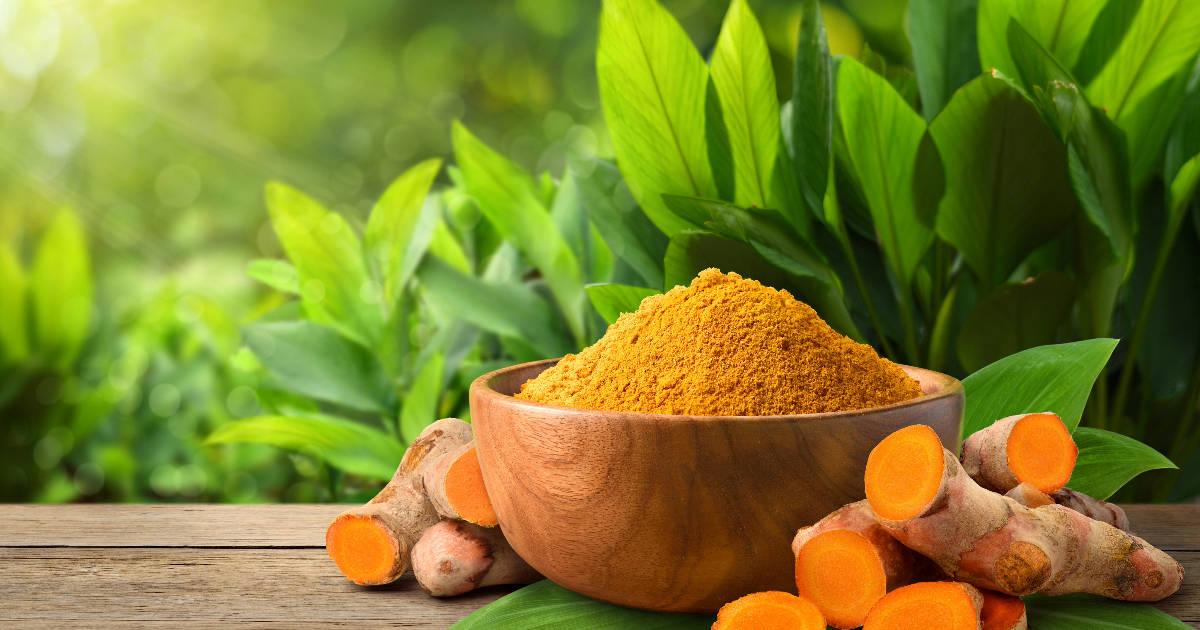Turmeric powder is a popular spice used in many cuisines around the world. It has a beautiful bright yellow color and adds a mild, earthy flavor to dishes. Turmeric root has also been used for centuries in traditional medicine systems like Ayurveda and Chinese medicine due to its many potential health benefits.

Making your own turmeric powder at home is easy, rewarding and ensures you have the freshest, high-quality powder on hand to use in cooking and other applications.
Making Homemade Turmeric Powder
The basic process for making DIY turmeric powder is:
- Acquire fresh turmeric root. You can purchase it or grow your own.
- Clean the roots thoroughly.
- Slice or chop the roots into thin, uniform pieces.
- Dry the turmeric pieces, either using a dehydrator or in the oven on very low heat.
- Grind the completely dried turmeric into a fine powder once brittle.
- Store the fresh powder in an airtight container in a cool, dark place.
When stored properly, homemade turmeric powder can retain its potency for up to 1 year. The following sections walk through each step of the process in greater detail.
Step 1: Obtain Fresh Turmeric Root
The first step is acquiring fresh turmeric root, which serves as the starting material to make ground turmeric powder. There are a couple options for obtaining fresh turmeric:
- Purchase it - Look for fresh turmeric rhizomes at ethnic grocers, health food stores or specialty markets. Choose plump, firm roots with smooth skin. Avoid any with spots, mushy patches or mold.
- Grow it yourself - Turmeric is a tropical plant that can be grown as an annual in temperate climates. You can find both plants and rhizomes available to grow. With enough space and time, you can produce a large harvest of turmeric roots for powder making.
Once you have enough fresh turmeric rhizomes, you can get started processing them into powder. Select rhizomes that are mature, plump and firm. Soft, shriveled or sprouted rhizomes won't dry properly.
Key Takeaway: Obtain ample fresh turmeric roots to dry and grind into powder. Purchase them or grow your own turmeric for the freshest powder possible.
Step 2: Clean the Turmeric Roots
Before drying and grinding, it's important to properly clean the fresh turmeric roots. Here's how:
- First, rinse the rhizomes under cool running water to remove any dirt or debris on the surface. Use a vegetable scrub brush if needed to wash off stubborn soil.
- Trim - Using a sharp knife, slice off any roots, sprouts or leaves growing off the main rhizomes.
- Peel - Turmeric roots have thin brown skin that can be peeled off before processing. However, peeling is optional. The skin contains fiber and nutrients too. For simplicity, you can leave it on.
- Chop - Finally, chop washed rhizomes into smaller pieces to make slicing them next easier. Aim for 1-2 inch chunks.
Washing and prepping the roots properly ensures no dirt or mold spores end up in your finished turmeric powder.
Key Takeaway: Thoroughly wash fresh turmeric roots before processing them. Trim off any roots, leaves and sprouts. Peeling is optional. Chop into smaller chunks.
Step 3: Slice the Turmeric Into Thin Pieces
The next step is to slice your cleaned turmeric roots into very thin, uniform pieces. This greatly reduces the drying time and improves the grinding process later on.
When slicing the turmeric, aim for pieces no thicker than 1/8 inch (3 mm). The thinner you can slice them safely with your knives, the better. Here are a few options for achieving paper-thin slices:
- Sharp knife - A very sharp chef's knife works well to manually slice turmeric thinly and evenly. Slice slowly and carefully.
- Mandoline - A mandoline slicer with a razor blade is ideal for cutting uniform thin slices quickly. Watch your fingers!
- Food processor - Use a food processor fitted with a slicing blade to cut the turmeric into very fine slices in larger batches.
Work carefully when slicing to achieve the most even, thin pieces possible. The thinner and more uniform your slices, the faster and more consistent the drying process will be.
Key Takeaway: Slice cleaned turmeric roots into very thin uniform pieces, around 1/8 inch thick or thinner. This speeds drying time.
Step 4: Dry the Sliced Turmeric
Proper drying is the most crucial step for making top quality homemade turmeric powder. To maximize flavor, color and nutritional value, it's important to dry the turmeric thoroughly at a low temperature without overheating.
There are two recommended methods for properly drying fresh sliced turmeric root:
Using a Dehydrator
A food dehydrator is the preferred method for making DIY turmeric powder. Dehydrators allow you to precisely control temperature and airflow, drying the turmeric evenly and gently.
To dehydrate turmeric:
- Arrange sliced pieces in a single layer on dehydrator trays without overlapping.
- Set the temperature between 95°F to 115°F. 135°F is too hot.
- Allow turmeric to dehydrate for 5-12 hours. Time varies on thickness.
- Check for doneness by snapping a piece in half. It should crumble easily when totally dry, not bend.
- Continue dehydrating if needed until the pieces are fully dried and brittle.
Using the Oven
If you don't have a dehydrator, a low temperature oven can also be used. Keep the temperature as low as possible. Many ovens won't go below 170°F, but you can prop the door open to ventilate and reduce heat.
To oven-dry turmeric:
- Place sliced turmeric in single layers on trays lined with parchment paper.
- Set oven to lowest temperature, ideally below 150°F.
- Dry turmeric for 2 to 4 hours with door propped, checking and stirring hourly.
- Continue dehydrating if needed until the pieces are fully dried and brittle.
Regardless of method, make absolutely sure all moisture is removed from the turmeric before grinding or it will clump up. The pieces should be brittle and snap when bent in half.
Key Takeaway: Dehydrate sliced turmeric at 95°F to 115°F until completely dry and brittle. Use a food dehydrator or low oven with door propped open.
Step 5: Grind the Dried Turmeric Into Powder
Once the sliced turmeric pieces are fully dried and brittle, they're ready to be ground into a fine powder.
A dedicated coffee/spice grinder works best to grind dried turmeric into a fine, fluffy powder. You can also use a high powered blender, food processor or mortar and pestle.
Here are some tips for grinding optimally:
- Work in small batches that fit your grinder. Overfilling will result in uneven grinding.
- Pulse and shake the grinder to grind into a uniform powder, not clumps.
- Sift the powder through a fine mesh strainer to remove any pieces that didn't grind down.
- Grind sifted pieces again until all is finely ground.
- Avoid overheating spices when grinding. Keep pulses short.
Take your time and grind in small batches for the finest, fluffiest homemade turmeric powder possible. Sift out any remaining chunks and re-grind if needed.
Key Takeaway: Grind the fully dried turmeric into powder using short pulses in a coffee grinder, spice grinder or blender. Work in small batches. Sift and re-grind any remaining chunks if needed.
Step 6: Store the Turmeric Powder Properly
Like many spices, turmeric powder is sensitive to heat, air, light and moisture. For maximum shelf life and potency, it's important to store homemade turmeric powder properly.
Here are some tips for proper storage:
- Place turmeric powder in an airtight glass jar or container immediately after grinding. Don't let it sit out exposed to air.
- Store in a cool, dark place away from light, heat and moisture. An ideal spot is a cupboard or pantry.
- If possible, add a packet of silica desiccant to the jar to absorb any moisture.
- Avoid refrigerating or freezing turmeric powder as condensation can form.
- Use powder within 1 year for best flavor and potency if stored properly.
Proper storage helps retain the vibrant color and antioxidant compounds like curcumin in your homemade turmeric powder. Use an airtight container and cool, dark place for storage.
Key Takeaway: Store freshly ground turmeric powder in an airtight glass container in a cool, dark place like a cupboard. Use within 1 year for best quality.
Making Turmeric Tea and Golden Milk
Once you have homemade turmeric powder on hand, there are endless savory ways to use it in cooking. But one of the most popular uses is for making turmeric tea and golden milk.
Both are excellent ways to enjoy the benefits of turmeric daily. Here is a quick recipe for each:
Turmeric Tea
- 1 cup water
- 1/2 teaspoon turmeric powder
- 1/2 teaspoon grated ginger
- 1 teaspoon honey or lemon (optional)
Golden Milk
- 1 cup unsweetened coconut or almond milk
- 1/2 teaspoon turmeric powder
- 1/2 teaspoon grated ginger
- 1/2 teaspoon cinnamon
- 1/2 teaspoon honey or maple syrup (optional)
Simply combine all ingredients in small saucepan and gently heat until steaming and well combined. Sweeten if desired. Sip and enjoy your anti-inflammatory elixir!
FAQs
Should you boil fresh turmeric before drying?
Some recipes call for briefly boiling or steaming fresh turmeric before dehydrating it. However, this step is optional. Boiling can help soften the roots slightly for easier slicing but is not necessary. Avoid over boiling, as extended heat can destroy beneficial compounds.
Does it matter if the skin is removed before drying?
Peeling turmeric roots before slicing is also optional. The skin contains fiber and nutrients too. For simplicity, you can leave the skin on for processing into powder. But peeling first is fine too.
How long does homemade turmeric powder last?
When stored properly in an airtight container in a cool, dark place, homemade turmeric powder will retain its potency and flavor for up to 1 year.
Can you use an oven instead of a food dehydrator?
Yes, a low temperature oven (below 150°F) can be used to dry fresh turmeric for making powder. Prop the door open to allow moisture to ventilate and prevent overheating.
What's the best way to grind dried turmeric pieces into powder?
Use a dedicated coffee/spice grinder or high-powered blender to grind dried turmeric into powder. Work in small batches and sift to ensure a fine, uniform powder without clumps.

Homemade Turmeric Powder
Ingredients
- Fresh turmeric roots
- Spice or coffee grinder
Instructions
- Rinse fresh turmeric roots thoroughly under cool water to clean. Scrub if needed. Remove any roots, leaves or sprouts.
- Chop turmeric into 1-2 inch chunks. Peeling is optional.
- Slice turmeric into very thin pieces, about 1/8 inch thick. Thinner is better. Use a mandoline, food processor or sharp knife.
- Dehydrate slices at 95°F to 115°F until completely dried and brittle. Use a dehydrator or low oven with door propped open.
- Grind dried turmeric into powder using a spice or coffee grinder. Work in small batches. Sift out chunks and re-grind if needed.
- Store freshly ground powder in an airtight container in a cool, dark place. Keeps for up to 1 year.
Notes
Conclusion
Making DIY turmeric powder from fresh roots is easy and worthwhile! With minimal equipment, you can have fresh, aromatic turmeric powder within 1-2 days.
Homemade turmeric powder boasts pure flavor and maximum health benefits too. Enjoy your fresh powder in teas, lattes, curries, soups and more!

